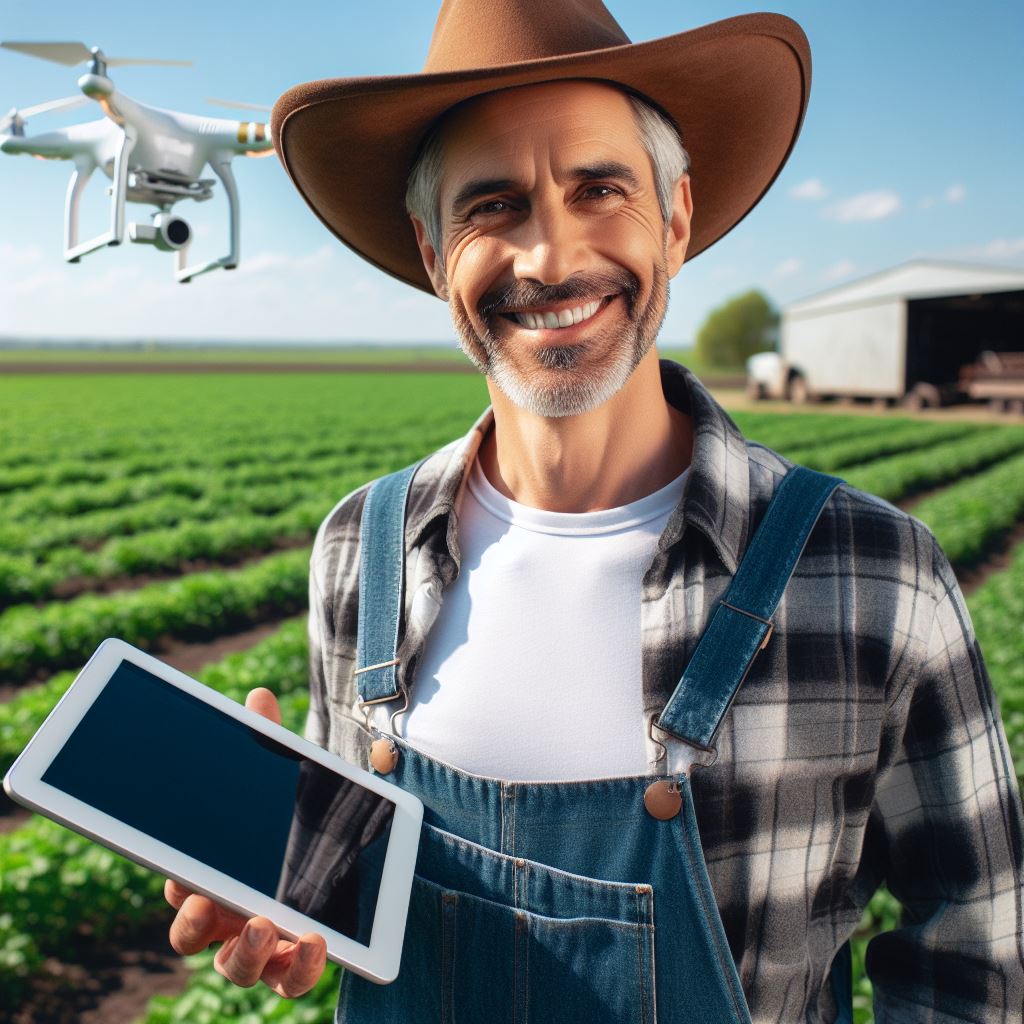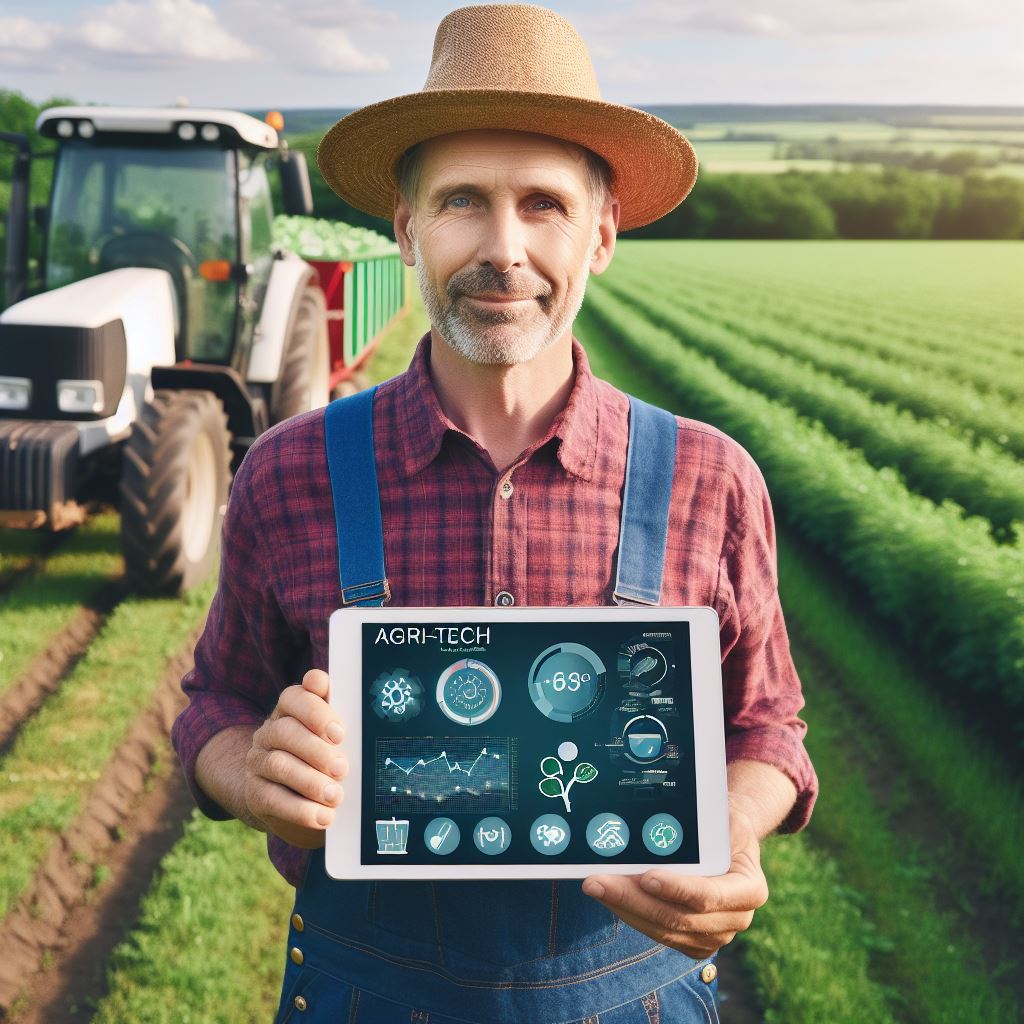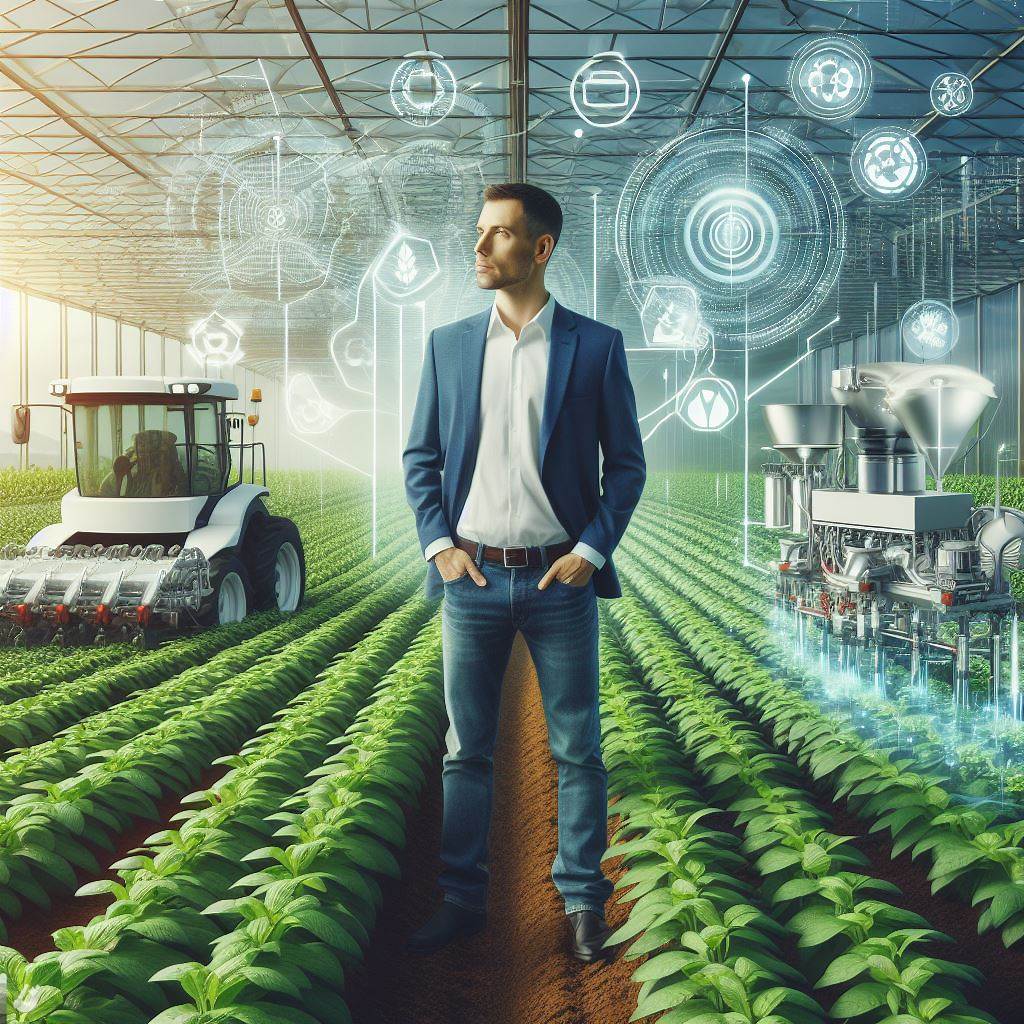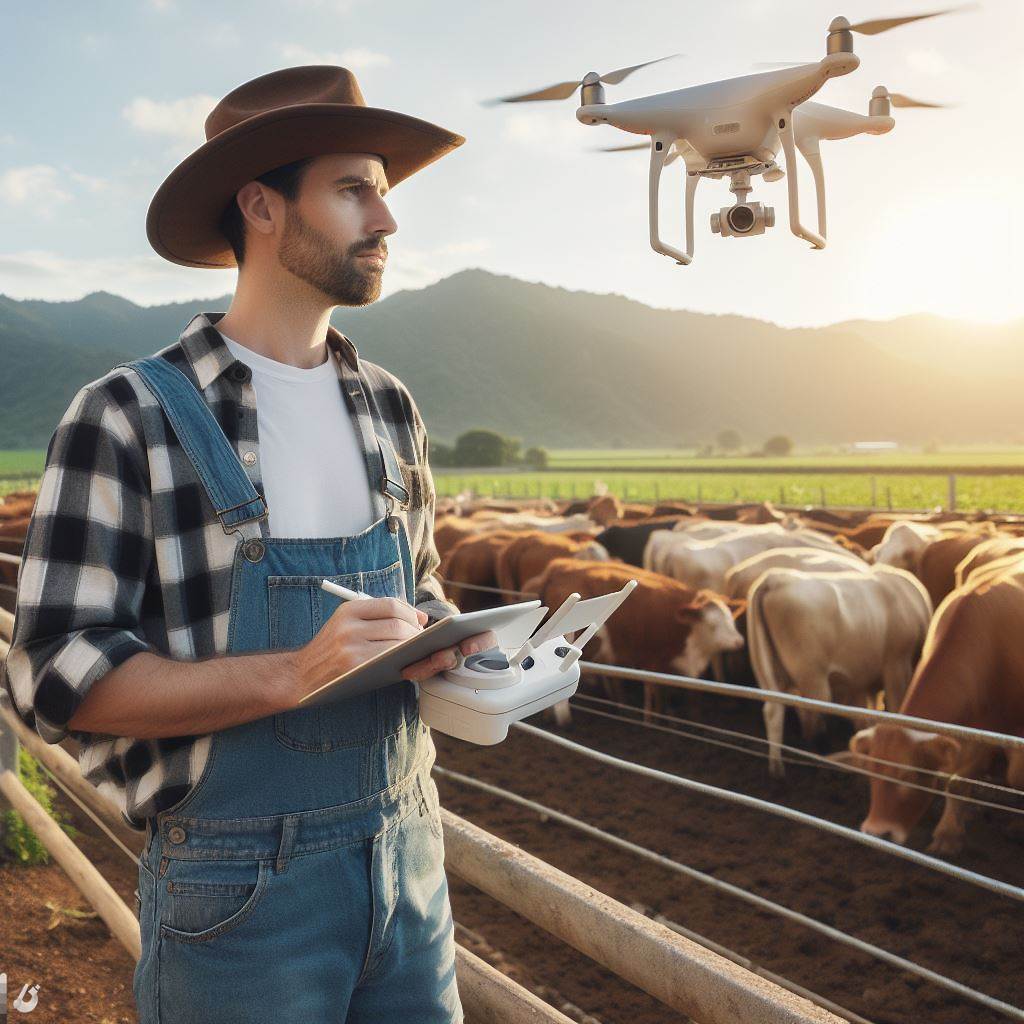Introduction
Let’s explore water-saving tech in agriculture: Startups to watch.
Water-saving technology plays a crucial role in agriculture due to its significance in conserving water resources.
With the increasing interest in startups that provide innovative solutions, it is essential to emphasize the importance of these technologies.
The purpose of this blog post is to shed light on the startups to watch in the water-saving tech industry in agriculture.
By highlighting their contributions, we aim to create awareness and promote the adoption of these technologies for sustainable farming practices.
Water is a limited and vital resource for agriculture, making water-saving technology crucial.
These technologies enable farmers to minimize water wastage and enhance irrigation efficiency.
By adopting these solutions, farmers can optimize water use and reduce their environmental impact.
Water-saving technology ensures sustainable farming practices and safeguards water resources for future generations.
There has been a surge in interest in startups that provide innovative water-saving solutions.
These startups bring fresh ideas, technology, and sustainable practices to enhance water management in agriculture.
Investors are recognizing the potential and profitability of these startups, leading to increased funding and support.
This growing interest showcases the significance and demand for water-saving technologies in the farming industry.
The purpose of this blog post is to showcase the startups to watch in the water-saving tech industry in agriculture.
By highlighting their innovative solutions and contributions, we aim to inspire farmers and industry stakeholders.
Transform Your Agribusiness
Unlock your farm's potential with expert advice tailored to your needs. Get actionable steps that drive real results.
Get StartedPromoting these startups will encourage the adoption of water-saving technologies for sustainable farming practices.
Through this blog post, we hope to create awareness and support the growth of these startups for a more sustainable future in agriculture.
Overview of the Current Water Scarcity Problem in Agriculture
Agriculture is heavily dependent on water, and the current water scarcity problem has significant implications for the industry.
A. Statistics on global water consumption in agriculture
Water consumption in agriculture is alarmingly high, with statistics showing the magnitude of the issue:
- Approximately 70% of global freshwater withdrawals are used for agriculture.
- In developing countries, this number skyrockets to 90%.
- On average, 1 liter of water is required to produce 1 calorie of food.
- Agriculture accounts for 80% of total global water use.
These statistics clearly highlight the immense water demand that agriculture places on the planet.
B. Implications of water scarcity on food production
The scarcity of water in agriculture leads to several detrimental effects on food production:
- Reduced crop yields and lower quality of produce.
- Increased risk of crop failure and decreased agricultural productivity.
- Higher food prices due to decreased supply and increased production costs.
- Food insecurity and malnutrition, especially in water-stressed regions.
- Ecological imbalances, such as depletion of groundwater and damage to ecosystems.
These implications underscore the urgent need to address water scarcity in agriculture.
C. Need for sustainable water management techniques
To tackle the water scarcity problem, sustainable water management techniques are crucial:
- Efficient irrigation systems can significantly reduce water consumption in agriculture.
- Water-saving technologies and practices, such as precision farming, can optimize water usage.
- Improved water storage and conservation methods can help mitigate water scarcity.
- Water recycling and reuse systems can alleviate the demand for fresh water.
- Promotion of drought-resistant crops and sustainable farming practices is essential.
Adopting these sustainable water management techniques can contribute to long-term solutions.
Generally, the current water scarcity problem in agriculture necessitates immediate action.
The alarming global water consumption in agriculture, coupled with the detrimental implications on food production, highlights the urgency of sustainable water management.
To address this issue, efficient irrigation systems, water-saving technologies, improved water storage methods, and promotion of sustainable farming practices are crucial.
By implementing these solutions, we can work towards ensuring a water-secure future for agriculture and mitigating the adverse effects of water scarcity on food production.
Read: Innovations in Livestock Comfort Control
Explanation of Water-Saving Technologies
In this section, we will explore three water-saving technologies that have gained significant attention in the agricultural sector: drip irrigation systems, soil moisture sensors, and precision agriculture.
A. Drip Irrigation System
Drip irrigation systems are an effective method for conserving water in agriculture.
Unlike traditional irrigation methods that spray water over large areas, drip irrigation delivers water directly to the roots of plants.
This targeted approach reduces water wastage by minimizing evaporation and ensuring that water is only provided where it is needed.
One of the key benefits of drip irrigation is its efficiency in water distribution.
By supplying water directly to the plants’ roots, it avoids surface runoff and deep percolation, which can lead to water loss.
This technology also allows for precise control over the amount of water delivered, minimizing water usage and reducing the risk of overwatering.
B. Soil Moisture Sensors
Soil moisture sensors play a crucial role in water conservation efforts in agriculture.
These sensors measure the water content in the soil, providing valuable information for farmers to make informed irrigation decisions.
By accurately monitoring soil moisture levels, farmers can avoid both overwatering and underwatering.
Showcase Your Farming Business
Publish your professional farming services profile on our blog for a one-time fee of $200 and reach a dedicated audience of farmers and agribusiness owners.
Publish Your ProfileOverwatering not only wastes water but can also lead to nutrient leaching and root diseases.
Underwatering, on the other hand, can negatively impact crop yield.
Soil moisture sensors enable farmers to optimize irrigation schedules based on actual soil moisture data, ensuring that plants receive the right amount of water at the right time.
Using soil moisture sensors offers several advantages.
Firstly, it helps farmers save water by avoiding unnecessary irrigation.
Secondly, it promotes crop health and reduces the risk of water-related plant diseases.
Lastly, it improves water use efficiency, leading to higher yields and better overall farm productivity.
C. Precision Agriculture
- Precision agriculture is a farming approach that utilizes advanced technology to optimize water use and improve overall farm management.
- It involves the integration of various techniques, such as remote sensing, data analysis, and real-time monitoring.
- The concept of precision agriculture revolves around collecting accurate data about the farm, including soil composition, moisture levels, and crop health.
- This data is then analyzed to generate insights and take informed actions.
- By understanding the specific needs of crops and their growth patterns, farmers can make precise decisions regarding water application.
- Various techniques are employed in precision agriculture to optimize water usage.
- Remote sensing technologies, such as aerial imagery and satellite data, provide valuable information on crop health and water stress indicators.
- This helps farmers identify areas that require additional irrigation or adjustments in water management strategies.
- Additionally, data analysis tools enable farmers to analyze historical trends and make predictions, ensuring efficient water allocation.
In short, water-saving technologies are of great importance in agriculture as they help conserve water resources, improve crop health, and increase farm productivity.
Drip irrigation systems, soil moisture sensors, and precision agriculture techniques all play vital roles in optimizing water usage.
By adopting these technologies, farmers can contribute to sustainable water management and ensure a more efficient and eco-friendly agricultural sector.
Read: Data-Driven Livestock Nutrition Plans

Gain More Insights: AI’s Role in Modern Farming Techniques
Uncover the Details: AI’s Role in Modern Farming Techniques
Startups Revolutionizing Water-Saving Technology in Agriculture
Startups in the agricultural sector are revolutionizing water-saving technology to address the challenges of water scarcity and increase efficiency in irrigation practices.
With agricultural water use accounting for a significant portion of global water consumption, innovative startups are playing a crucial role in sustainable farming.
Startup 1: CropX
1. Overview of their water-saving technology
One notable startup that focuses on water-saving technology in agriculture is CropX.
Founded in 2013 in Israel, CropX specializes in precision agriculture and soil analytics to help farmers optimize irrigation and monitor soil conditions.
By utilizing advanced sensing technology and data analysis, CropX enables farmers to implement targeted irrigation strategies, resulting in improved water efficiency and increased crop yields.
The company’s water-saving technology offers real-time data on soil moisture levels, allowing farmers to make informed decisions about irrigation timing and volume.
2. Unique features and advantages
CropX’s wireless soil sensors offer accurate data, an intuitive mobile app aids decision-making, and a cloud platform stores and analyzes data.
With these features, farmers can remotely monitor their fields and adjust irrigation schedules accordingly, reducing water waste and promoting sustainable water use practices.
3. Success stories or recognition
The success stories of CropX further highlight the effectiveness of their water-saving technology.
Numerous farmers have reported significant reductions in water usage and increased crop yields after implementing CropX’s precision irrigation solutions.
These success stories have garnered recognition for CropX, earning them prestigious awards and accolades in the agricultural industry.
Startup 2: SWIIM System
1. Overview of their water-saving technology
Another startup making waves in the water-saving technology sector is SWIIM System.
Based in the United States, SWIIM System offers a comprehensive water accounting and management platform that assists farmers in monitoring and managing their water usage.
SWIIM System integrates data from weather stations, soil sensors, and flow meters, offering farmers real-time insights to optimize irrigation.
2. Unique features and advantages
SWIIM System’s unique features include advanced data analytics and modeling capabilities, remote access through mobile and web applications, and integration with existing irrigation systems.
The platform enables farmers to track their water usage, identify areas of inefficiency, and implement targeted interventions to reduce water waste.
By optimizing irrigation practices, farmers can not only conserve water but also improve crop health and overall farm profitability.
Startup 3: Netafim
1. Overview of their water-saving technology
- Netafim is another startup that has made significant contributions to water-saving technology in agriculture.
- As a global leader in drip irrigation solutions, Netafim has revolutionized the way water is delivered to plants by developing innovative drip irrigation systems.
- This technology allows farmers to deliver water directly to the roots of plants, minimizing losses due to evaporation and runoff.
2. Unique features and advantages
- The unique features of Netafim’s drip irrigation technology include precision emission devices, pressure-compensating drippers, and advanced control systems.
- These features ensure accurate and uniform water distribution, promoting optimal plant growth while minimizing water usage.
- Netafim’s drip irrigation systems have been widely adopted by farmers worldwide, leading to increased crop yields, improved water efficiency, and enhanced profitability.
3. Success stories or recognition
- Netafim’s expertise and commitment to water-saving technology have earned them recognition in the agricultural industry.
- Their drip irrigation solutions have received numerous awards and accolades, showcasing their impact on sustainable farming practices.
In essence, startups such as CropX, SWIIM System, and Netafim are at the forefront of revolutionizing water-saving technology in agriculture.
Through their innovative solutions and technologies, these startups are enabling farmers to optimize irrigation practices, conserve water, and increase crop yields.
With the ever-growing need to address water scarcity and promote sustainable farming, the role of these startups in the agricultural sector is vital for a more water-efficient and resilient future.
Read: Tech in Veterinary Care: Modern Approaches
Uncover the Details: AI’s Role in Modern Farming Techniques
Challenges and Opportunities in Adopting Water-Saving Tech
A. Cost implications for farmers
- The initial investment required for water-saving technologies can be a significant barrier for farmers.
- Adoption costs include purchasing and installing equipment, as well as any necessary infrastructure modifications.
- Farmers may struggle to allocate funds for these technologies, especially when they have limited financial resources.
- However, in the long run, water-saving tech can lead to cost savings through reduced water usage and increased efficiency.
- Government subsidies and incentives can help alleviate the financial burden and promote adoption among farmers.
B. Lack of awareness and education on these technologies
- Many farmers are unaware of the latest water-saving technologies available in the market.
- The lack of knowledge about these technologies hinders their adoption and potential benefits.
- Information sharing platforms, such as workshops, conferences, and online resources, are crucial to educate farmers.
- Collaboration between technology providers, agricultural researchers, and extension services can bridge the knowledge gap.
- Increased awareness and understanding of water-saving tech will encourage farmers to consider their implementation.
C. Government support and policies
- Government policies and support play a vital role in promoting the adoption of water-saving technologies.
- Governments can offer financial incentives, tax breaks, and subsidies to encourage farmers to invest in these technologies.
- Policy frameworks can be designed to ensure proper implementation and provide guidelines for technology selection.
- Collaboration between the government, technology providers, and agricultural organizations is essential for success.
- Governments can also establish research and development funding to further improve and advance water-saving technologies.
D. Potential benefits and long-term sustainability
- Adoption of water-saving tech can lead to significant benefits for both farmers and the environment.
- Sustainable water usage reduces the strain on local water sources and helps conserve this precious resource.
- Increased water efficiency can improve crop productivity, resulting in higher yields for farmers.
- Water-saving technologies also promote more sustainable farming practices and support food security.
- Investing in these technologies creates long-term sustainability, ensuring the availability of water for future generations.
In a nutshell, the adoption of water-saving technologies in agriculture presents both challenges and opportunities.
The high costs, lack of awareness, and the need for government support are hurdles that need to be addressed.
However, the potential benefits and long-term sustainability make it imperative to overcome these challenges.
By promoting education and awareness, offering financial incentives, and implementing supportive policies, the agricultural sector can successfully adopt and benefit from water-saving tech.
Read: Virtual Fencing: The Future of Herding
Showcase Your Farming Business
Publish your professional farming services profile on our blog for a one-time fee of $200 and reach a dedicated audience of farmers and agribusiness owners.
Publish Your ProfileConclusion
Water-saving technology plays a crucial role in ensuring sustainable agriculture.
By implementing innovative solutions, farmers can conserve water resources, reduce wastage, and enhance overall productivity.
Startups and innovations in water-saving technology are vital for addressing the pressing issue of water scarcity.
These new players bring fresh perspectives and inventive approaches that can revolutionize the agricultural sector’s water management practices.
As readers, it is essential to stay informed and explore the various startups working towards water-saving technologies in agriculture.
By supporting these initiatives, we can contribute to a sustainable future, ensure food security, and protect our precious water resources.




